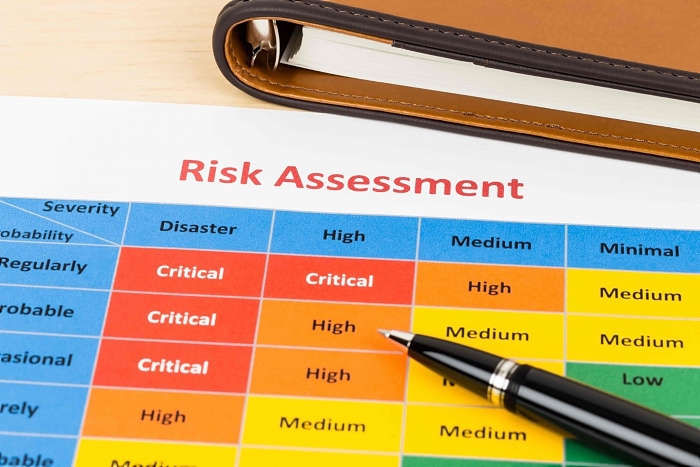
A risk assessment is a process of identifying hazards in a space so that steps can be taken to prevent yourself and others from being hurt or injured.
It is vital to everyone’s safety that such assessments be carried out – especially in the workplace, where employers have a duty of care to their employees and anyone else who could potentially be at risk.
When defining a safety issue, it’s important to consider three subtly different but important terms: accidents, hazards and risk.
An accident refers to an unplanned event resulting in harm, such as walking into a chair or falling over.
A hazard refers to something that could jeopardise safety, such as loose wires or free-hanging heavy equipment.
Risk, meanwhile, refers to the calculation of how likely an accident might be or how much damage it could do.
Identify hazards
The first step of a risk assessment is to take a look at the most basic and obvious hazards in your location – this could mean, for example, heavy equipment that could be tipped over.
Then you want to dig more deeply into hazards that might not be as immediately visible.
What happens if chairs are not properly adjusted, perhaps? What are the risks of injury in the case of falling cladding?
It is also a good idea to ask your colleagues about the risks that they have observed in the area, as fresh perspective can be helpful to ensure that nothing is missed.
Common types of risks assessments include:
• Fire risk assessment: all workplaces are required to have thorough fire-safety procedures.
• Generic risk assessment: an assessment which considers the tasks being carried out in an area and the risks that could arise from them. The contents of these assessments could differ greatly depending on the work in question.
• Display screen equipment (DSE) risk assessment: this is required within workplaces where employees use computers, to evaluate potential risks such as eye strain.
Identify ways to address those risks
Evaluating your location and the work carried out there is only half the battle; you must then act on the identified issues.
Investing in safety equipment that can reduce the chances of accidents or mitigate harm done if one does occur can not only help to avoid paperwork but also make your colleagues feel safer and more valued as team members.
Such equipment could mean purpose-designed clothing, like safety-conscious boots and shoes, protective headgear or other accessories.
It might instead take the form of proper office chairs and comfortable desks, or even kitchenware – everything from mugs to kettles or a new fridge, if for example previous such equipment was found to be faulty.
Getting the best out of your staff and keeping them safe doesn’t always mean something tangible.
The benefits of an increased sense of safety for mental health and wellbeing are invisible but valuable – so there’s really no angle from which it doesn’t make sense to take proper safety precautions with a robust risk assessment.
Record and review
Once you’ve established your risks and hazards and made a plan of action for how to address them, it’s important that this is all written down clearly.
Categorising each hazard can make your assessment easier to understand – perhaps through colour-coding, like green for minor risks, orange for moderate and red for major.
For example, you might have identified that falling from a stage balcony could result in injury to a person’s leg, head or body.
Depending on factors such as the height of the balcony and the surface on which the person would land should they fall from it, this could be categorised as anything from a mild to extremely serious risk.
The next steps here would be to find a proper balcony rest or harness that could be attached to someone operating in that area.
Recording and reviewing all possible risks – as well as those that have made themselves apparent in the past – will solidify in your colleagues’ minds that they are being appropriately looked after and valued.
(Image by pxhere licence free https://pxhere.com/en/photo/1597945)





















Recent Comments